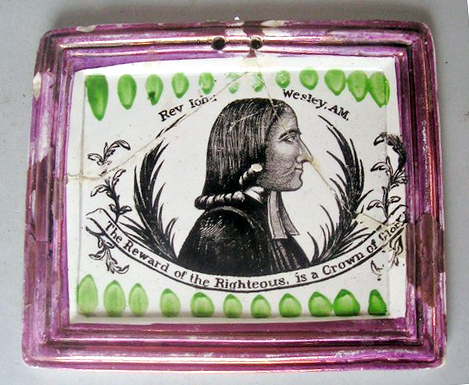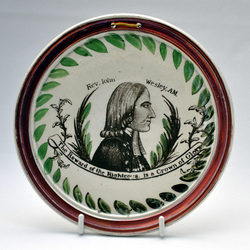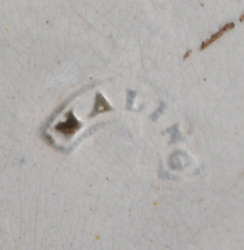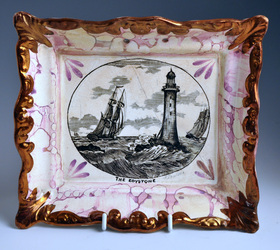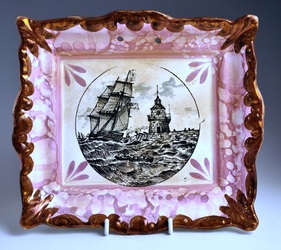|
10/28/2012 2 Comments Damaged plaquesMy friend, Myrna, has blogged about avoiding damaged and restored items. She's a purist, and despite collecting rare early figures, won't buy anything if it doesn't make her exacting grade. But despite the fact that transfer-printed plaques were mass produced, some are so rare that a collector might either have to accept a bit of damage, or resign him/herself to never owning one. The plaque below is one such example. It has clearly been through the wars, but three collectors wanted it badly enough to bid over £300 on ebay – it finally sold for a whopping £387. The plaque is typical of early Maling (post 1817). See below for a marked circular example (click to enlarge). When I started buying on ebay over 10 years ago, a pair of broken plaques came up. I expected to get them for under £100 each, but withdrew when the bidding shot up over £200. I reasoned that sooner or later a perfect pair would materialise. Not so. In fact, I had to wait 10 years until the same pair of broken plaques came up for sale again, in an auction house in America. Both have the Dixon, Phillips & Co anchor impressed mark (1839–c1850). There is another restored example of the left plaque below, titled 'THE EDYSTONE' (sic), in the Sunderland Museum & Winter Gardens, Tyne & Wear Archives & Museums collection. But I've never seen another plaque like the one below right. Perhaps the main argument against buying damaged items is that you might never see your money back. But let's face it, anyone collecting nowadays isn't thinking about investment. Some plaques that sold for £400 in the late nineties, now struggle to make a century.
When the broken rectangular Wesley plaque was listed on ebay, I was so excited I couldn't sleep. I got up at 5am to take another look at it. I didn't buy it, but if you could bottle the rare feeling of seeing something new, it would certainly be worth paying a premium for. Perhaps the acid test for purchasing damaged items should be, will they end up on your mantelpiece, or in a box under your bed?
2 Comments
1/2/2013 06:40:20 am
Hi Stephen,
Reply
Leave a Reply. |
AuthorStephen Smith lives in London, and is always happy to hear from other collectors. If you have an interesting collection of plaques, and are based in the UK, he will photograph them for you. Free advice given regarding selling and dispersal of a collection, or to those wishing to start one. Just get in touch... Archives
February 2022
AcknowledgementsThis website is indebted to collectors, dealers and enthusiasts who have shared their knowledge or photos. In particular: Ian Holmes, Stephen Duckworth, Dick Henrywood, Norman Lowe, Keith Lovell, Donald H Ryan, Harold Crowder, Jack and Joyce Cockerill, Myrna Schkolne, Elinor Penna, Ian Sharp, Shauna Gregg at the Sunderland Museum, Keith Bell, Martyn Edgell, and Liz Denton.
|
